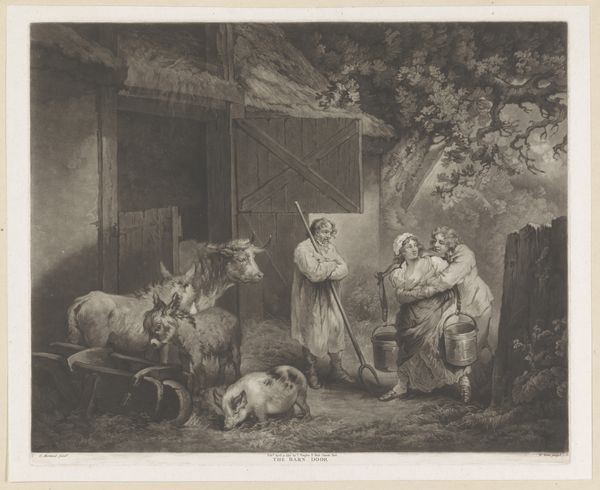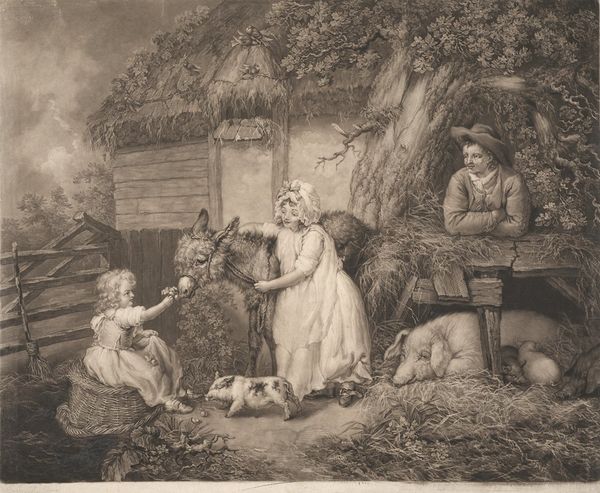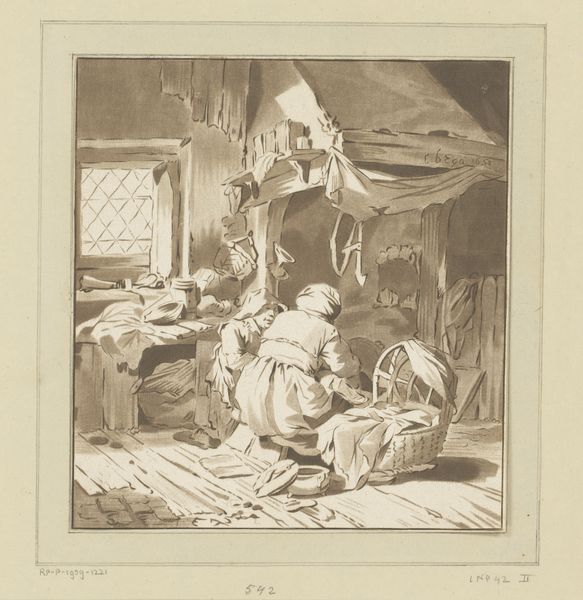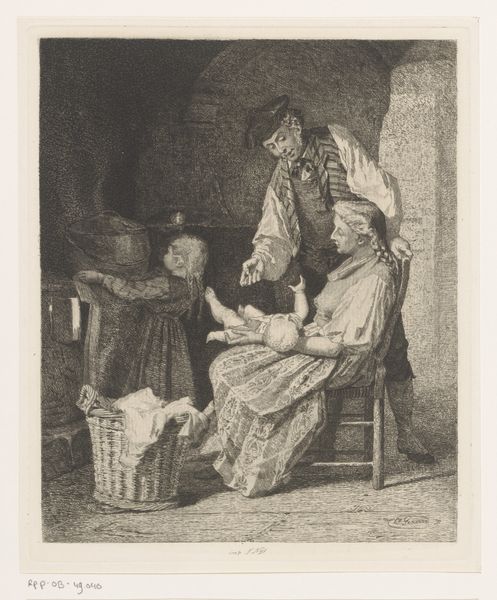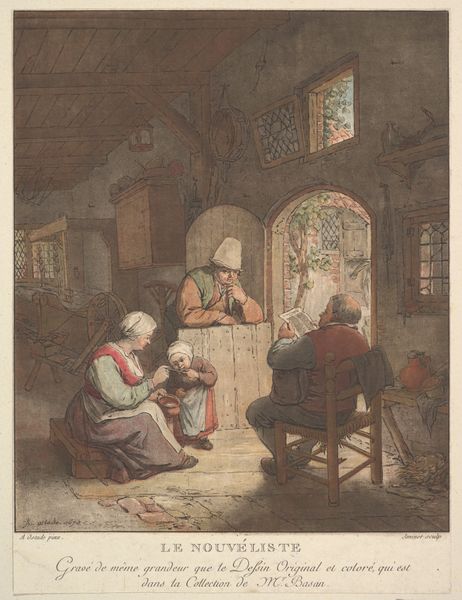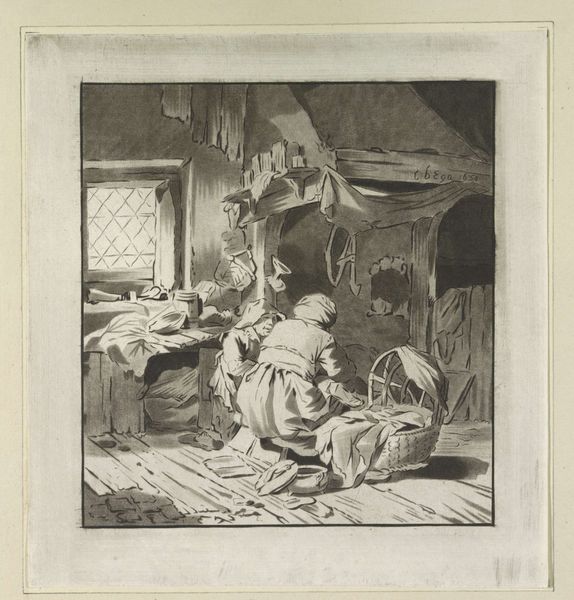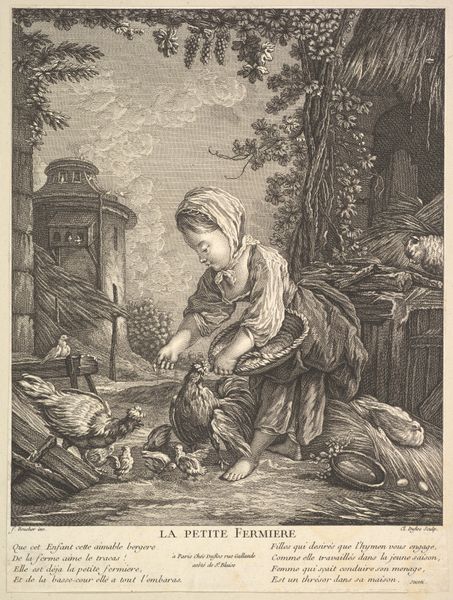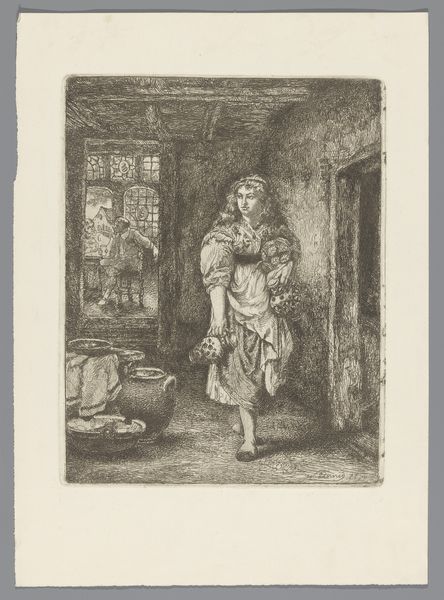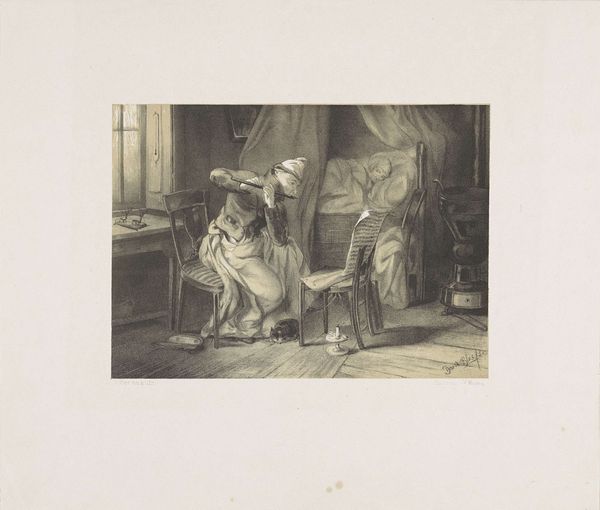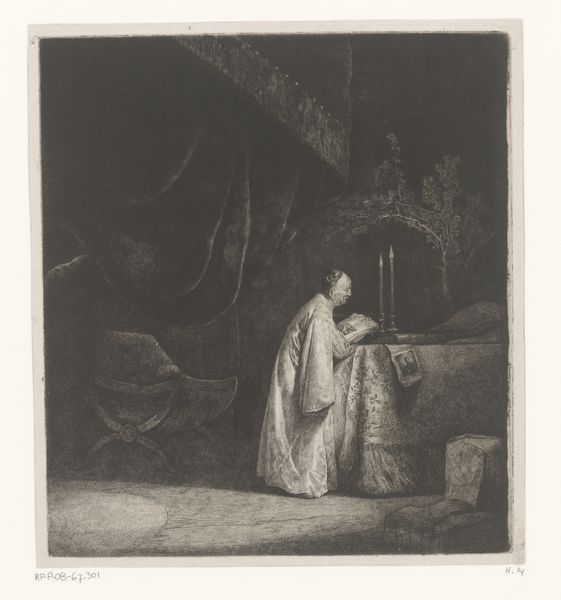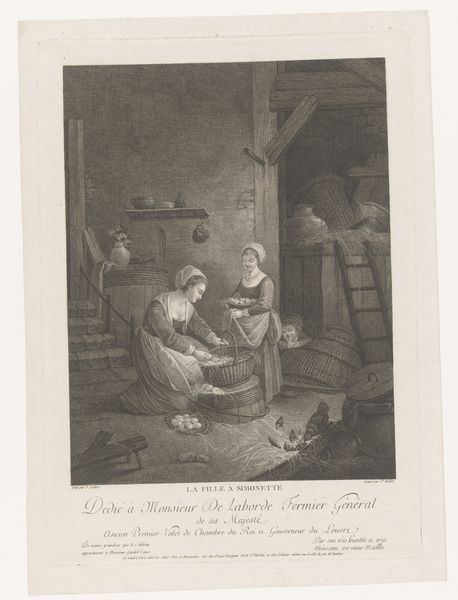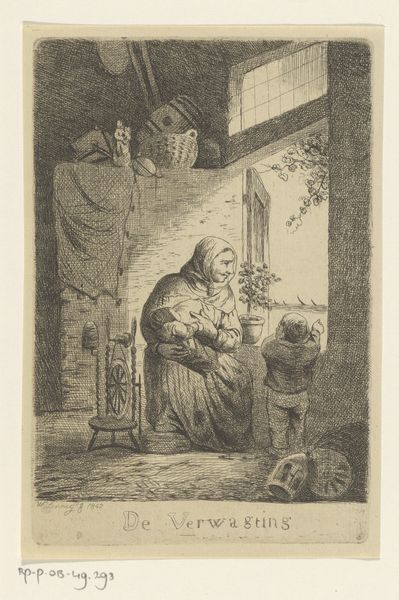
engraving
#
landscape
#
figuration
#
romanticism
#
genre-painting
#
engraving
Dimensions: height 544 mm, width 398 mm
Copyright: Rijks Museum: Open Domain
Editor: So, this is "Family Before an Inn" by William Ward, created between 1796 and 1798, using the engraving technique. I am fascinated by the scene of apparent rest it offers; you see a family outside an inn, possibly after a long day’s work. What do you think strikes the eye most readily? Curator: As a materialist, I find the *process* of engraving most compelling. Think of the labor involved in creating this image. Ward wasn't just representing a scene; he was deeply engaged in the very means of production, turning copper into a medium of exchange itself. How does this method affect what and how the artist chooses to create, when such detailed hand work is crucial to the creative end result? Editor: I never thought of it that way. It's incredible to think of the amount of work carving an image like this into a metal plate. Does the use of engraving, specifically, reflect the societal view on art as a crafted object rather than, say, divine inspiration during that period? Curator: Precisely. The rise of printmaking, particularly engravings, coincided with shifts in social structures. Consider the consumption of art at the time, and where it was primarily displayed. Engravings were far more accessible than original paintings, which democratized the consumption of imagery to some degree. We see here also the impact on genre scenes that can show moments of social class exchange at an inn. How might this shift the relationship between artist and audience? Editor: It makes it feel like the work is more available and connected to broader populations. That’s something I will definitely look into further. It highlights the connection between artistic methods and how people engaged with art and the culture during the late 18th century! Curator: Indeed. Reflect on Ward's choice of subject, how daily labor, inn culture, and family interplay in the marketplace. In a landscape undergoing industrial shifts, even simple forms become commentary on economy and daily material survival. Editor: Thanks for drawing out those key material connections for me. It really makes me want to dig more into the socioeconomic context of this print.
Comments
No comments
Be the first to comment and join the conversation on the ultimate creative platform.
